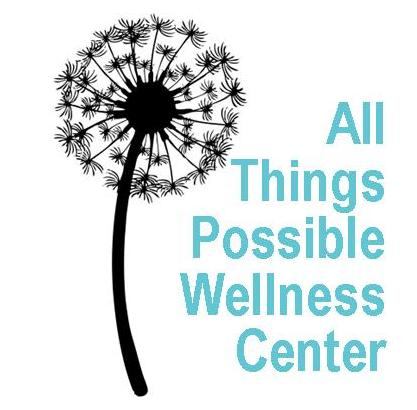Attachment – The Roadmap to Relational Health

Kathleen McMahon, MA, LPC
Attachment styles manifest through distinct patterns of interaction and behavior within relationships. In early childhood, these styles revolve around the dynamics between children and caregivers. As individuals mature into adulthood, attachment styles extend to characterize patterns within romantic relationships.
Our understanding of attachment styles stems from attachment theory and research conducted during the 1960s and 1970s. Presently, professionals commonly identify four primary attachment styles: secure, anxious, avoidant, and disorganized.
Attachment types form during early life and persist over time. This doesn’t imply that they are permanent; rather, it suggests the potential for transformation into more secure attachment forms. Achieving this transformation involves cultivating self-awareness through understanding and addressing attachment issues. The initial step in this journey is to grasp the development of insecure attachment and its impact on thoughts and behaviors within significant relationships. Fundamentally, the actions of a parent or primary caregiver towards meeting their child’s needs establishes the groundwork for how the child perceives and behaves in close relationships.
This stems from the child’s dependency on caregivers, seeking comfort, soothing, and support from them. When caregivers provide a nurturing and attentive environment and are responsive to the child’s physical and emotional needs, the child develops a secure attachment.
Conversely, if caregivers are out of sync or misattuned to the child’s physical and emotional needs, it’s likely to result in insecure attachment. It’s important to note that caregiver misattunement may not be intentional, but the child still perceives it as a failure to meet their needs.
Let’s take a look at how each attachment style could present:
Anxious/Preoccupied:
Individuals with an anxious attachment style typically possess a negative self-perception but hold a positive view of others, often considering their partner as their “better half.” Due to feeling less deserving of love, the prospect of being alone or without their partner triggers significant anxiety, rooted in a deep fear of abandonment.
To mitigate this fear, those with an anxious attachment style actively seek security in relationships, relying on their partner’s attention, care, and responsiveness as a remedy for their anxiety. Alternatively, a perceived lack of support and intimacy may lead to clinginess, heightened demands, preoccupation with the relationship, and a desperate need for reassurance of their loved one’s commitment.
Avoidant/Dismissive:
People with the avoidant/dismissive attachment style tend to place a lot of value on their independence and self-sufficiency, especially on an emotional level. A core fear of an individual with avoidant patterns is fear of failure and loss of identity/independence. This often translates into a proclivity for avoiding conflicts and maintaining emotional guardedness as a protective mechanism.
Avoidants often had to give up large, important, difficult-to-retrieve parts of themselves to keep things running in the connections upon which they were dependent. Usually, such roles were covertly assigned during childhood. In not wanting to re-experience that kind of loneliness, avoidant individuals often conflate the feeling of being obligated to submit to caring for one’s partner and the voluntary work one is willing to put in for a relationship, which may present as being “emotionally unavailable” or hyper-independent.
Disorganized/Fearful Avoidant:
Individuals exhibiting a disorganized attachment style often oscillate between traits associated with both anxious and avoidant attachment patterns, depending on their mood and circumstances. Consequently, individuals with this attachment style may display perplexing and ambiguous behaviors within their social relationships.
In the realm of adults with disorganized attachment, the partner and the relationship itself become dual sources of both desire and fear. While there is a genuine desire for intimacy and closeness, individuals with a fearful-avoidant tendency experience difficulties in trusting and relying on others.
Those with this attachment style frequently encounter challenges in recognizing and managing their emotions, leading them to shy away from strong emotional connections due to an intense fear of potential emotional harm.
Secure:
The secure attachment style implies that a person is comfortable expressing emotions openly. Therefore, adults with a secure attachment style can depend on their partners and, in turn, let their partners rely on them.
Individuals characterized by secure attachments may experience occasional moments of relationship anxiety, but they do not habitually carry an overarching fear. This fear encompasses concerns about being unheard, perceived as a failure, or facing a pervasive lack of trust. Their intrinsic disposition, both within and outside of relationships, instills a foundational belief that they will be acknowledged, heard, and comprehended. Furthermore, these individuals enter relationships with an inherent expectation that, despite imperfections in their partner or the potential conflicts, trust repair is a feasible and anticipated aspect of the relational dynamic.
With all this being said, the good news is that what has been learned can be unlearned. Everyone is fully capable of growing and healing, and other than the relationship we hold with ourselves and others, the relationship we form with a therapist can be an incredible opportunity to engage in this growth and healing. In the therapeutic setting, the carefully cultivated space and therapeutic relationship serve as a sanctuary for healing, particularly concerning attachment styles and emotional wounds. Within this supportive environment, individuals are invited to explore the intricate facets of their attachment patterns and the lingering effects of past wounds with a compassionate and nonjudgmental guide. Through introspection and dialogue, the therapy process offers a profound opportunity for individuals to foster a deeper understanding of their attachment dynamics, unveil underlying emotional patterns, and ultimately, embark on a journey towards healing and secure relational connections. In this safe and nurturing space, clients are empowered to confront and transform their relational vulnerabilities, paving the way for profound personal growth and the cultivation of healthier, more fulfilling relationships.
